Criar uma instância RancherOS
pt:Criar uma instância RancherOS
he:ליצור מופע RancherOS
ro:Creaţi o instanţă huevos
ru:Создайте экземпляр RancherOS
pl:Utworzenie wystąpienie RancherOS
ja:ランチャロス インスタンスを作成します。
ar:قم بإنشاء مثيل رانتشيروس
zh:创建一个实例牧场主人
de:Erstellen Sie eine Instanz RancherOS
nl:Een exemplaar maken RancherOS
it:Creare un'istanza RancherOS
es:Crear una instancia de RancherOS
en:Create an instance RancherOS
fr:Creer une instance RancherOS
Este artigo foi traduzido por um sistema de tradução automática. Você pode visualizar a fonte do artigo aqui.
O procedimento a seguir descreve como criar uma instância Rancheiros Nuvem Ikoula. RancherOS é a distribuição GNU /Linux, que é o mais minimalista e simples de usar a janela de encaixe. Em RancherOS tudo é recipiente (incluindo, por ex emplo, o udev e rsyslog ), Janela de encaixe também está executando como processo PID 1 Este sistema (normalmente init ou empacotador ). Também é um sistema que tem a vantagem de ter a versão mais recente do estivador ou quase tão interessante quando você quer ter as mais recentes características de estivador.
Em um primeiro passo, se conectar ao a interface de gerenciamento Nuvem Ikoula :
Criar uma nova instância :
- Clique em 'Corpos' no menu à esquerda vertical :
- Clique no botão 'Adicionar uma instância' :
- Selecione uma implantação da caixa de lista drop-down (em nosso exemplo escolheremos uma zona avançada em rede / nome da área, terminando com "ADV" ) :
- Selecione "ISO" :
- Clique em «next»
- Selecione a ISO "RancherOS v 0.4 '. "na lista da ISO da guia patrocinado :
- Clique em «Next»
- Escolha uma oferta de cálculo :
- Clique em «Next»
- Digite o tamanho que você deseja atribuir ao disco virtual (rootdisk ) sua instância :
- Clique em "next" duas vezes
- Adicionar uma rede, digitando um nome e a oferta de rede desejada ou selecione uma das redes existentes :
- Clique em "Seguinte"
- Definir um nome para sua instância e, em seguida, clique no botão "Iniciar VM" :
- Espere até que a instância é 'em execução' :
- Clique em 'Rede' no menu à esquerda vertical na rede de seu nome de instância e clique em 'Exit regras' :
- Adicionar regra de saída (Firewall ) autorizando a saída para todos os protocolos :
- Volte para o guia "Detalhes" da sua rede e clique em 'Ver IP endereços' fonte de NAT de IP, seu endereço de rede :
- Clique na guia " '. Configuração ' em seguida, clique em 'Ver todos' do firewall e adicionar uma regra de firewall de entrada permitindo conexões SSH (Porto 22/TCP ) a sua rede
- Re-clique no fonte ip endereço NAT da sua rede :
- Clique sobre o botão "Ver todos" "port forwarding", em seguida, adicionar uma regra de encaminhamento de porta, permitindo que você faça logon em SSH sua instância (ex : Porto privado 22 porto público 22 Protocolo TCP ) e adicionar sua instância e fazer 'Aplicar'
- Logar o ssh na iso anexado a sua instância com o "fazendeiro" login e senha "rancheiro" :
demo@pc-demo:~$ ssh rancher@178.170.XX.XX
The authenticity of host '178.170.XX.XX (178.170.XX.XX)' can't be established.
ECDSA key fingerprint is xx:85:xx:02:xx:bf:xx:b4:xx:1d:xx:1a:xx:3a:xx:0b.
Are you sure you want to continue connecting (yes/no)? yes
Warning: Permanently added '178.170.XX.XX' (ECDSA) to the list of known hosts.
rancher@178.170.XX.XX's password:
[rancher@RancherOS ~]$
- Criar um arquivo nuvem-config.yml com cliente pública SSH RSA da sua chave de estação de trabalho. É essa chave que permitirá que você se conectar com o "fazendeiro" ssh login a sua instância RancherOS (Ver http://docs.rancher.com/os/nuvem-config/) :
[rancher@RancherOS ~]$ cat << EOF > cloud-config.yml
> #cloud-config
> ssh_authorized_keys:
> - ssh-rsa AAAAB...XXXXXX...YYYY.....ZZZZdemo@pc-demo
> EOF
[rancher@RancherOS ~]$
Substitua "AAAAB...XXXXXX...YYYY.....ZZZZdemo@pc-demo" pela chave SSH rsa pública sua estação de trabalho cliente no exemplo acima.
- Uma vez o arquivo nuvem-config.yml criado, execute o comando " '. instalar o sudo - ros c nuvem-config.yml - d /dev/xvda » para instalar RancherOS no disco virtual (rootdisk) sua instância :
[rancher@RancherOS ~]$ sudo ros install -c cloud-config.yml -d /dev/xvda
INFO[0000] No install type specified...defaulting to generic
Installing from rancher/os:v0.4.1
Continue [y/N]: y
Unable to find image 'rancher/os:v0.4.1' locally
v0.4.1: Pulling from rancher/os
26b82ec3311d: Pull complete
f05335696a9b: Pull complete
8e8fa9d5f794: Pull complete
6cbde7cc282e: Pull complete
ed08d2a1b7fe: Pull complete
3b09e65b0985: Pull complete
87bbc662b44c: Pull complete
f17c535a2c45: Pull complete
f5261f101133: Pull complete
Digest: sha256:320addc8d74521965956b8ec97c025b3d79db2f1e1a83235b767fe0953ef5b88
Status: Downloaded newer image for rancher/os:v0.4.1
+ DEVICE=/dev/xvda
+ [[:fr: -z /dev/xvda ]]
++ wc -l
+++ cut -d / -f3
+++ echo /dev/xvda
++ grep xvda /proc/partitions
+ PARTITION_COUNT=1
+ '[' 1 -gt 1 ']'
+ dd if=/dev/zero of=/dev/xvda bs=512 count=2048
2048+0 records in
2048+0 records out
1048576 bytes (1.0 MB) copied, 0.0372273 s, 28.2 MB/s
+ partprobe /dev/xvda
+ fdisk /dev/xvda
Welcome to fdisk (util-linux 2.25.2).
Changes will remain in memory only, until you decide to write them.
Be careful before using the write command.
Device does not contain a recognized partition table.
Created a new DOS disklabel with disk identifier 0x5ab88c99.
Command (m for help): Partition type
p primary (0 primary, 0 extended, 4 free)
e extended (container for logical partitions)
Select (default p): Partition number (1-4, default 1): First sector (2048-104857599, default 2048): Last sector, +sectors or +size{K,M,G,T,P} (2048-104857599, default 104857599):
Created a new partition 1 of type 'Linux' and of size 50 GiB.
Command (m for help): The partition table has been altered.
Calling ioctl() to re-read partition table.
Syncing disks.
++ dirname /scripts/lay-down-os
+ . /scripts/build.conf
++ IMAGE_NAME=rancher/os
++ VERSION=v0.4.1
++ DOCKER_BINARY_URL=https://github.com/rancher/docker/releases/download/v1.9.1-rc1-ros1/docker-1.9.1-rc1
++ COMPILED_KERNEL_URL=https://github.com/rancher/os-kernel/releases/download/Ubuntu-4.2.0-16.19/linux-4.2.3-rancher-x86.tar.gz
++ DFS_IMAGE=rancher/docker:1.9.1-rc1
+ VERSION=v0.4.1
+ getopts i:f:c:d:t:r:o:p: OPTION
+ case ${OPTION} in
+ DEVICE=/dev/xvda
+ getopts i:f:c:d:t:r:o:p: OPTION
+ case ${OPTION} in
+ ENV=generic
+ getopts i:f:c:d:t:r:o:p: OPTION
+ case ${OPTION} in
+ CLOUD_CONFIG=/opt/user_config.yml
+ getopts i:f:c:d:t:r:o:p: OPTION
+ DIST=/dist
+ CLOUD_CONFIG=/opt/user_config.yml
+ CONSOLE=tty0
+ BASE_DIR=/mnt/new_img
+ PARTITION=/dev/xvda1
+ KERNEL_ARGS=
+ '[' -n generic ']'
+ case ${ENV} in
+ format_and_mount
+ format_device
+ device_defined /dev/xvda
+ [[ -z /dev/xvda ]]
+ mkfs.ext4 -F -i 4096 -L RANCHER_STATE /dev/xvda1
mke2fs 1.42.12 (29-Aug-2014)
Creating filesystem with 13106944 4k blocks and 13107200 inodes
Filesystem UUID: 704a1b35-b886-430e-be0c-fac8e3ca5237
Superblock backups stored on blocks:
32768, 98304, 163840, 229376, 294912, 819200, 884736, 1605632, 2654208,
4096000, 7962624, 11239424
Allocating group tables: done
Writing inode tables: done
Creating journal (32768 blocks): done
Writing superblocks and filesystem accounting information: done
+ mount_device
+ local label=RANCHER_STATE
+ local raw=false
+ mkdir -p /mnt/new_img
++ wc -l
++ grep RANCHER_BOOT
++ lsblk -o name
+ '[' 0 -eq 1 ']'
+ local 'mount_opts=-L RANCHER_STATE'
+ '[' false == true ']'
+ mount -L RANCHER_STATE /mnt/new_img
+ trap 'umount /mnt/new_img' EXIT
+ create_boot_dirs
+ mkdir -p /mnt/new_img/boot/grub
+ install_grub
+ grub-install --boot-directory=/mnt/new_img/boot /dev/xvda
Installing for i386-pc platform.
Installation finished. No error reported.
+ /scripts/seed-data /mnt/new_img /opt/user_config.yml
+ BASE_DIR=/mnt/new_img
+ CLOUD_DATA=/opt/user_config.yml
+ IFS=,
+ read -ra FILES
+ '[' -z /mnt/new_img ']'
+ mkdir -p /mnt/new_img/var/lib/rancher/conf/cloud-config.d
+ '[' /opt/user_config.yml '!=' /scripts/conf/empty.yml ']'
+ cp /opt/user_config.yml /mnt/new_img/var/lib/rancher/conf/cloud-config.d/
+ grub2_config ''
+ local grub_cfg=/mnt/new_img/boot/grub/grub.cfg
+ local append_line=
+ cat
+ '[' '!' -z ']'
+ pvgrub_config ''
+ local grub_file=/mnt/new_img/boot/grub/menu.lst
+ local append_line=
+ cat
+ '[' '!' -z ']'
+ install_rancher
+ cp /dist/initrd /mnt/new_img/boot/initrd-v0.4.1-rancheros
+ cp /dist/vmlinuz /mnt/new_img/boot/vmlinuz-v0.4.1-rancheros
+ umount /mnt/new_img
Continue with reboot [y/N]: y
INFO[0103] Rebooting
- Parar sua instância e extrair o ISO ele :
- Comece sua instância, uma vez que o ISO extraído isto
- Se conectar à suas instância RancherOS em ssh com login 'fazendeiro' da máquina que tem a chave pública de SSH que você adicionou o arquivo nuvem-acima de config.yml :
demo@pc-demo:~$ ssh rancher@178.170.XX.XX
The authenticity of host 178.170.XX.XX (178.170.XX.XX)' can't be established.
ECDSA key fingerprint is xx:66:xx:c5:xx:bf:xx:b4:xx:47:xx:1a:xx:b8:xx:cf.
Are you sure you want to continue connecting (yes/no)? yes
Warning: Permanently added '178.170.XX.XX' (ECDSA) to the list of known hosts.
[rancher@RancherOS ~]$
- Sua instância tem agora RancherOS disco :
[rancher@RancherOS ~]$ docker info
Containers: 0
Images: 0
Server Version: 1.9.1-rc1
Storage Driver: overlay
Backing Filesystem: extfs
Execution Driver: native-0.2
Logging Driver: json-file
Kernel Version: 4.2.3-rancher
Operating System: RancherOS (containerized)
CPUs: 1
Total Memory: 990.8 MiB
Name: RancherOS.CloudInstances
ID: CWVI:BCAE:3DPO:2TCG:JKHM:RFVS:47G2:LZOH:4GB3:SP2Z:4A66:AVF7
[rancher@RancherOS ~]$
[root@RancherOS rancher]# df -hT
Filesystem Type Size Used Available Use% Mounted on
overlay overlay 46.7G 235.3M 44.0G 1% /
tmpfs tmpfs 482.0M 0 482.0M 0% /dev
tmpfs tmpfs 495.4M 0 495.4M 0% /sys/fs/cgroup
/dev/xvda1 ext4 46.7G 235.3M 44.0G 1% /home
/dev/xvda1 ext4 46.7G 235.3M 44.0G 1% /opt
none tmpfs 495.4M 272.0K 495.1M 0% /run
/dev/xvda1 ext4 46.7G 235.3M 44.0G 1% /sbin/iptables
/dev/xvda1 ext4 46.7G 235.3M 44.0G 1% /sbin/poweroff
/dev/xvda1 ext4 46.7G 235.3M 44.0G 1% /lib/modules
/dev/xvda1 ext4 46.7G 235.3M 44.0G 1% /sbin/halt
/dev/xvda1 ext4 46.7G 235.3M 44.0G 1% /sbin/shutdown
/dev/xvda1 ext4 46.7G 235.3M 44.0G 1% /etc/docker
none tmpfs 495.4M 272.0K 495.1M 0% /var/run
/dev/xvda1 ext4 46.7G 235.3M 44.0G 1% /etc/rkt
/dev/xvda1 ext4 46.7G 235.3M 44.0G 1% /sbin/reboot
devtmpfs devtmpfs 482.0M 0 482.0M 0% /host/dev
shm tmpfs 64.0M 0 64.0M 0% /host/dev/shm
/dev/xvda1 ext4 46.7G 235.3M 44.0G 1% /lib/firmware
/dev/xvda1 ext4 46.7G 235.3M 44.0G 1% /var/log
/dev/xvda1 ext4 46.7G 235.3M 44.0G 1% /usr/sbin/ros
/dev/xvda1 ext4 46.7G 235.3M 44.0G 1% /var/lib/rancher
/dev/xvda1 ext4 46.7G 235.3M 44.0G 1% /usr/bin/system-docker
/dev/xvda1 ext4 46.7G 235.3M 44.0G 1% /usr/sbin/wait-for-docker
/dev/xvda1 ext4 46.7G 235.3M 44.0G 1% /usr/sbin/netconf
/dev/xvda1 ext4 46.7G 235.3M 44.0G 1% /usr/bin/user-docker
/dev/xvda1 ext4 46.7G 235.3M 44.0G 1% /usr/sbin/rancherctl
/dev/xvda1 ext4 46.7G 235.3M 44.0G 1% /usr/bin/dockerlaunch
/dev/xvda1 ext4 46.7G 235.3M 44.0G 1% /usr/bin/respawn
/dev/xvda1 ext4 46.7G 235.3M 44.0G 1% /var/lib/rkt
/dev/xvda1 ext4 46.7G 235.3M 44.0G 1% /usr/sbin/wait-for-network
/dev/xvda1 ext4 46.7G 235.3M 44.0G 1% /usr/bin/docker.dist
/dev/xvda1 ext4 46.7G 235.3M 44.0G 1% /usr/bin/cloud-init
/dev/xvda1 ext4 46.7G 235.3M 44.0G 1% /var/lib/docker
/dev/xvda1 ext4 46.7G 235.3M 44.0G 1% /usr/share/ros/os-config.yml
/dev/xvda1 ext4 46.7G 235.3M 44.0G 1% /var/lib/rancher/conf
/dev/xvda1 ext4 46.7G 235.3M 44.0G 1% /etc/ssl/certs/ca-certificates.crt.rancher
/dev/xvda1 ext4 46.7G 235.3M 44.0G 1% /etc/resolv.conf
/dev/xvda1 ext4 46.7G 235.3M 44.0G 1% /etc/hostname
shm tmpfs 64.0M 0 64.0M 0% /dev/shm
devtmpfs devtmpfs 482.0M 0 482.0M 0% /dev
shm tmpfs 64.0M 0 64.0M 0% /dev/shm
[root@RancherOS rancher]#
Você pode se você quiser fazer um modelo da sua instância de seu rootdisk para implantar outros RancherOS (ex: RancherOS de cluster /Docker)
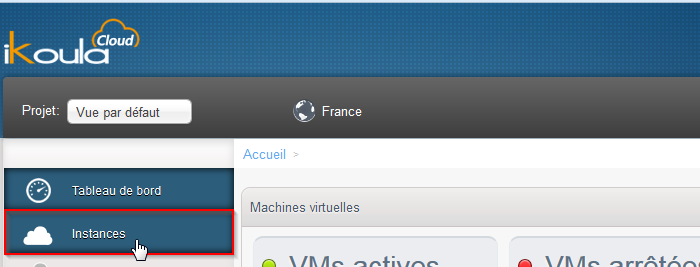

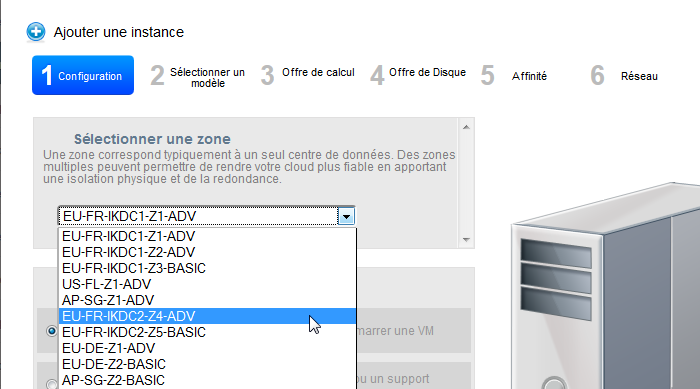

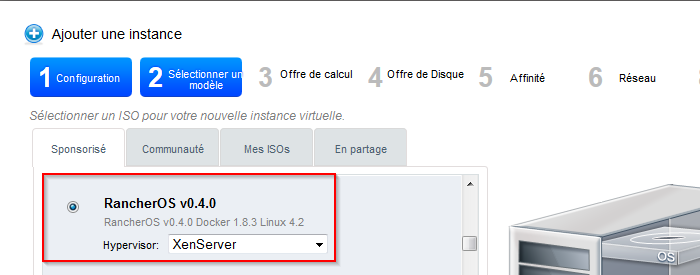
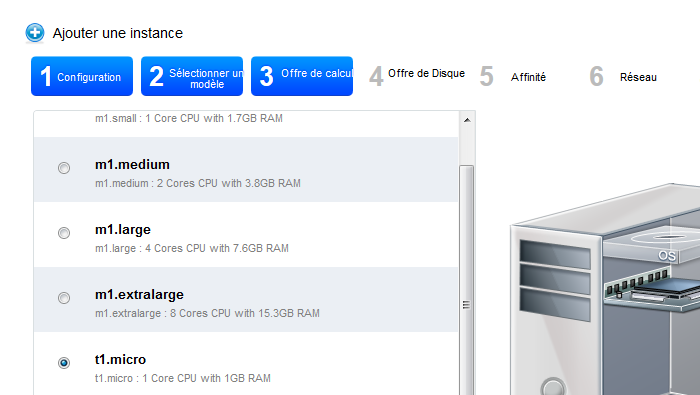
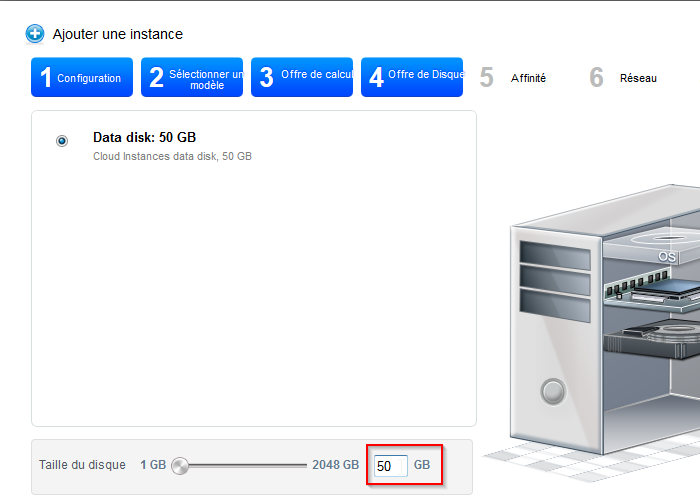
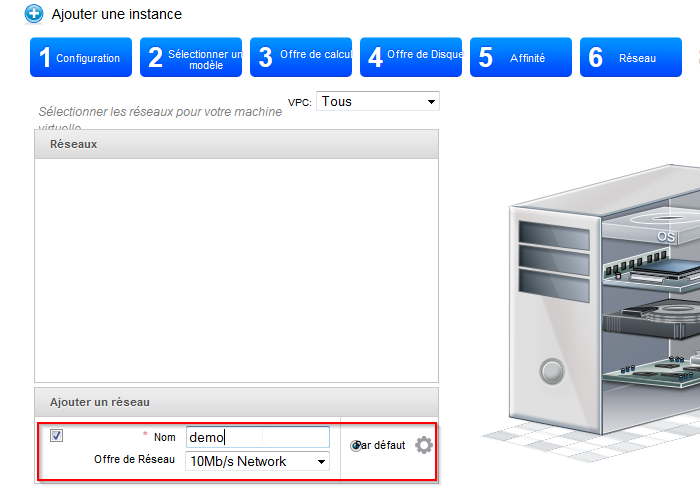
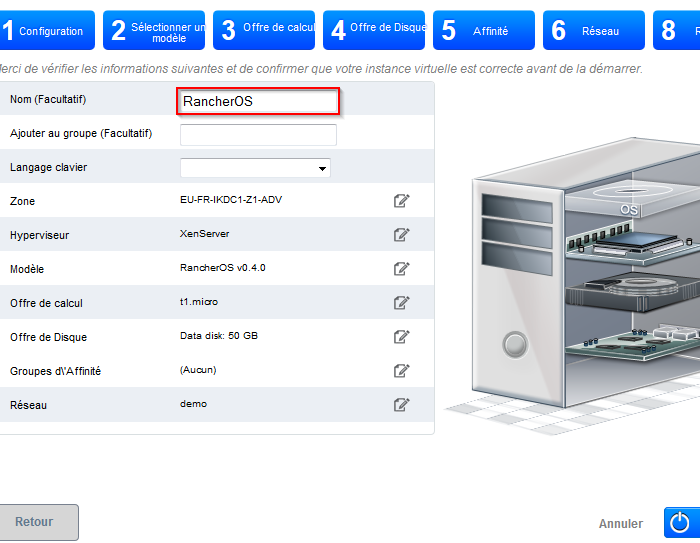








Ativar a atualização automática de comentários